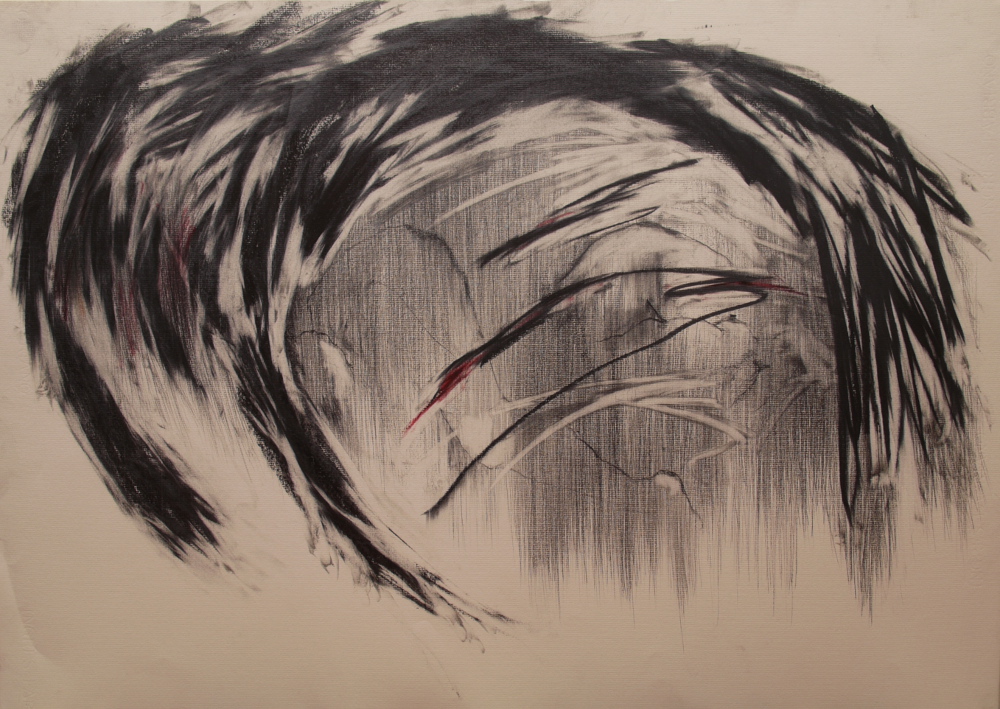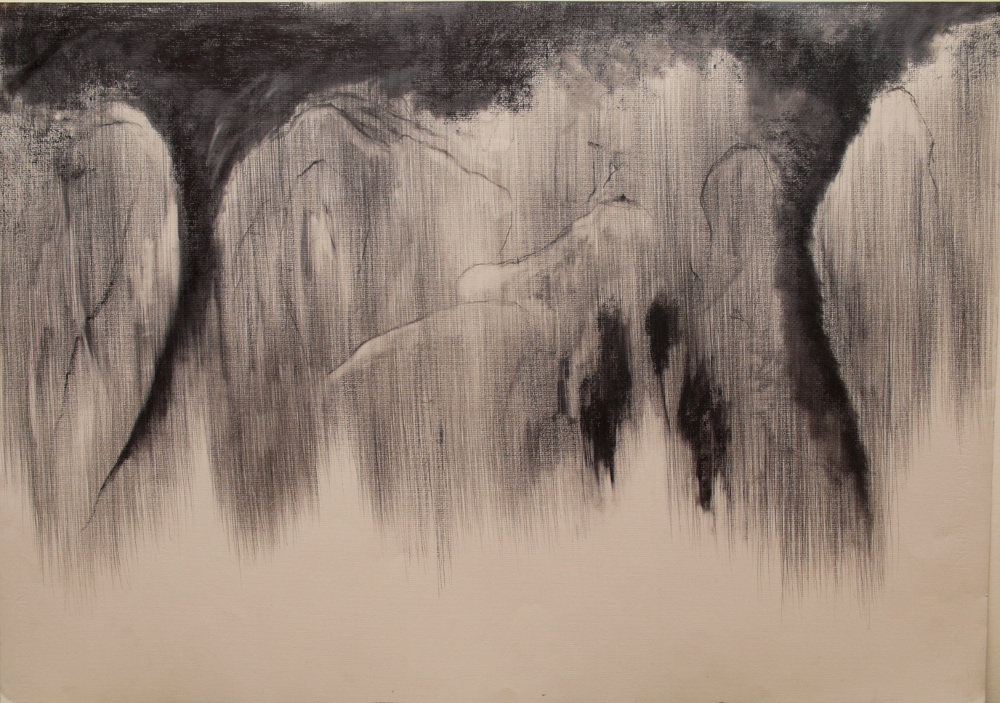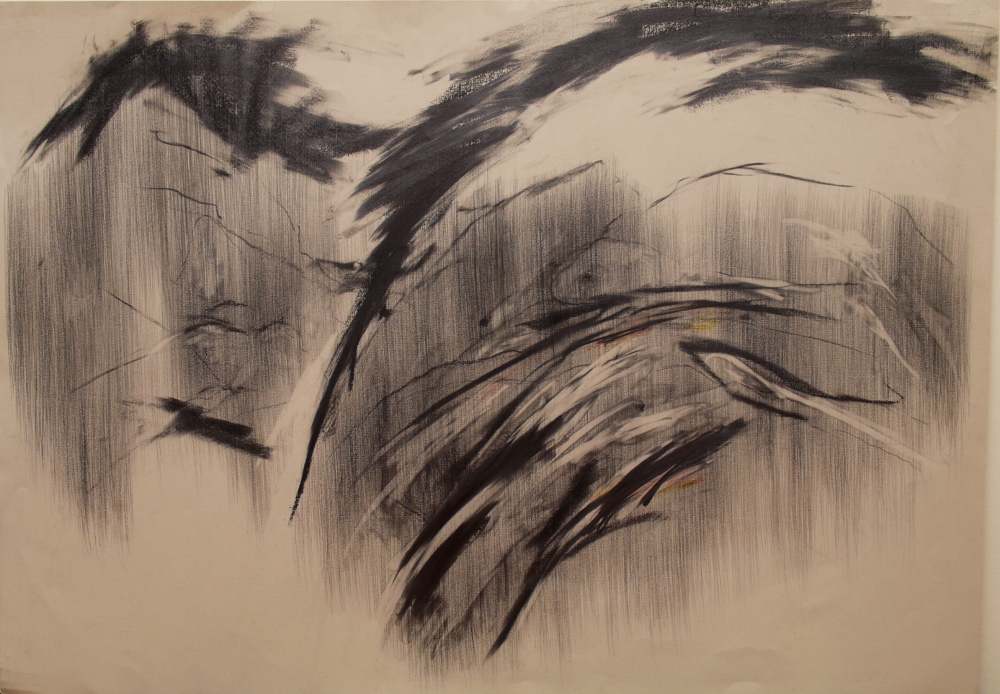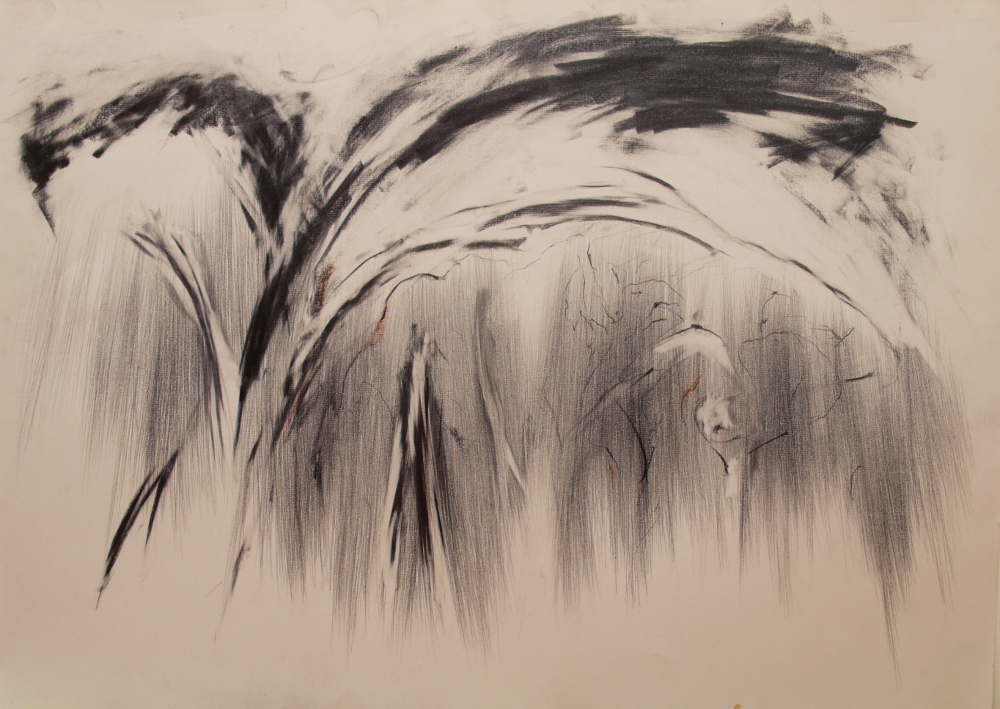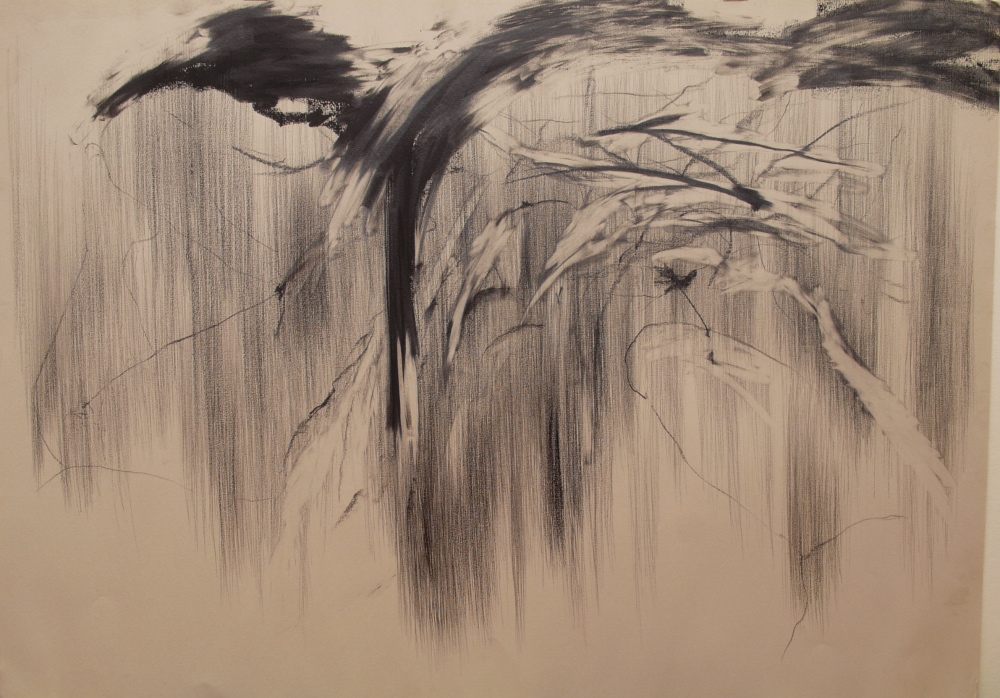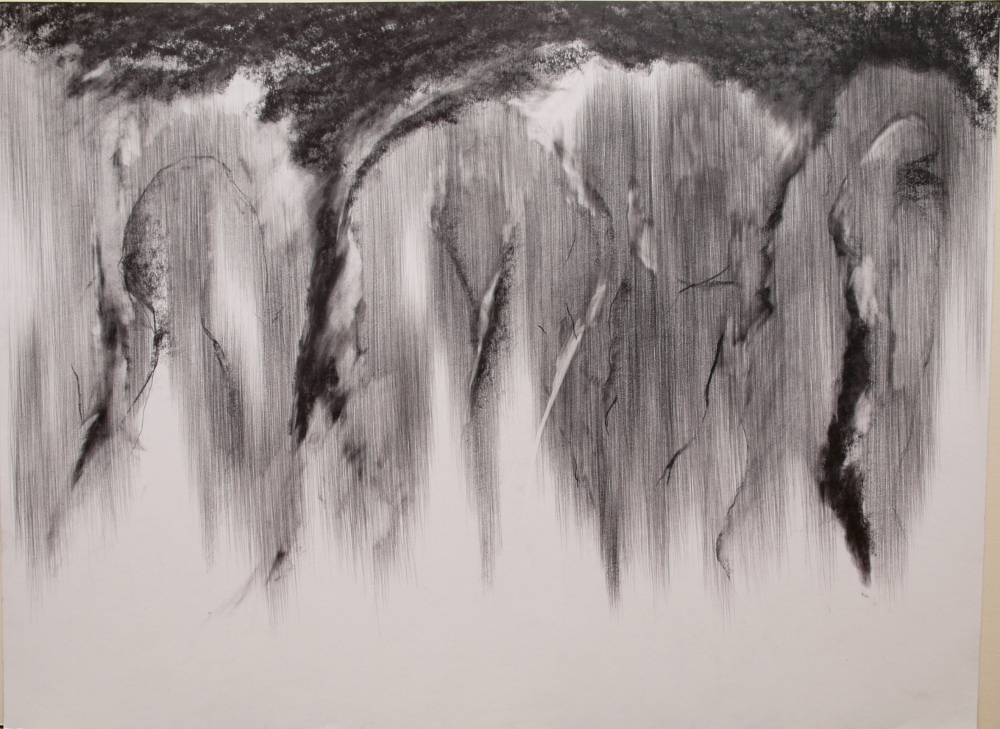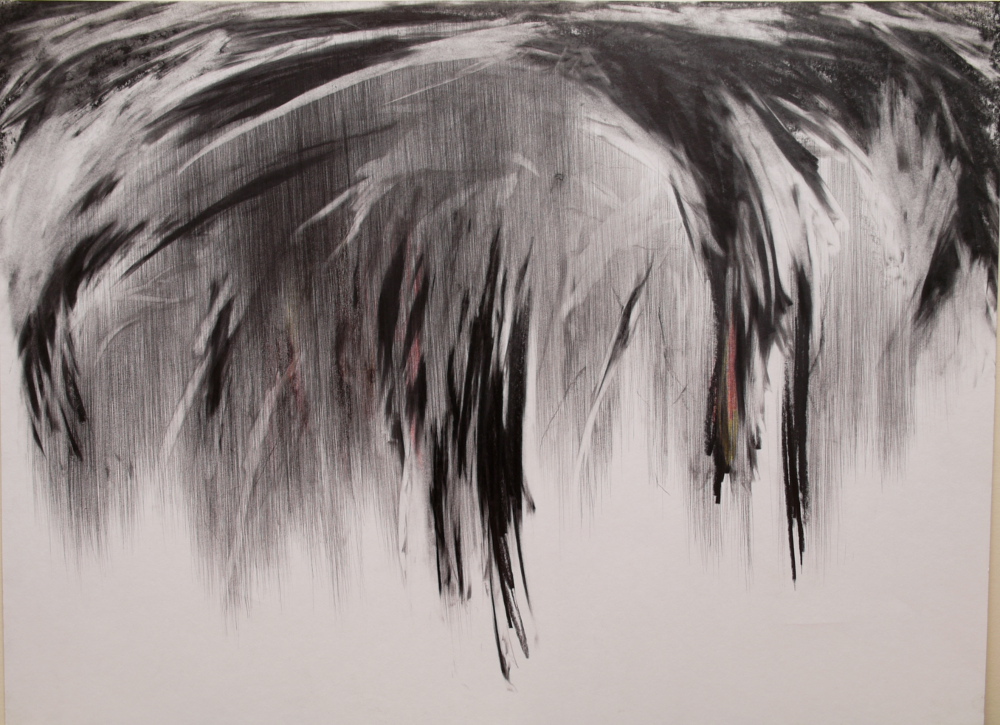In these drawings we experience a transformation: gentleness is turned into terror. These scenes remind us of hidden devastations, such as we stumble upon in the countryside where a fox has left behind the mangled remnants of its kill. Scattered feathers, torn and broken wings, ripped innards- these are what Levantis’s graphite insistently traces and scores across the pristine surfaces of his drawings. A furious intensity is at work; the pace, the tempo, never comes to rest. Instead, the lines move at breakneck speed to a pitch of hysteria. Here there is no respite. The mood is not caressing but dark. An evocation of how erotic desire becomes the tempestuous lust of the rapacious Zeus.
These images are a graphic gloss on Yeats’s great sonnet “Leda and the Swan”:
A sudden blow, the great wings beating still
Above the staggering girl, her thighs caressed
By the dark webs, her nape caught in his bill,
He holds her helpless breast against his breast.
How can those terrified vague fingers push
The feathered glory from her loosening thighs?
And how can body, laid in that white rush,
But feel the strange heart beating where it lies?
A shudder in the loins engenders there
The broken wall, the burning roof and tower
And Agamemnon dead.
Being so caught up,
So mastered by the brute blood of the air,
Did she put on his knowledge with his power
Before the indifferent beak could let her drop?
